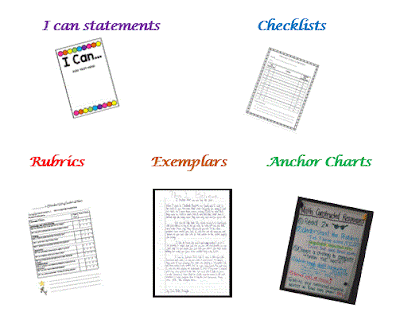Modifying
Learning Intentions to Include Language Expectations
Module 5: Modifying Learning Intentions to Include Language
Expectations- Pages 41-52
“Learning
intentions are further enhanced when the language expectations for the lesson
are included.”
To develop language expectations of the daily learning intention,
consider the three possible language requirements:
·
Vocabulary
·
Language
Structure
·
Language
Function
 BIG IDEA
BIG IDEA
Adding the language piece to your learning intentions helps scholars understand how they will use spoken and written language to learn and
demonstrate mastery of the content.
--------------------------------------------------------------------------------------------------------------
Determining the Relevance of the Learning
Module 6: Determining the Relevance of the Learning- Pages 53-68
Relevancy = Motivation
Determining the relevancy of the learning is crucial for scholar
success. Before learning takes place, scholars want to know..
WHAT am I learning?
WHY am I learning
this?
HOW am I
learning it?
HOW can it be
used?
WHAT makes me curious?
WHAT’S
the value?
Relevancy addresses the motivation to learn. All
learners need to have insight into WHY they are learning something.
1. What am I learning today? LEARNING INTENTION
2.
Why am I
learning this? *LEARNING
RELEVANCY*
3. How will I know that I learned it? SUCCESS CRITERIA
Sometimes finding the relevancy of school-based knowledge can be
challenging. It can be a struggle to frame the relevancy of the content if the
focus is a far-off aspiration in the distance. Relevancy needs to be CLOSER to HOME. Relevancy
deepens learning as scholars make connections to larger concepts.
What -> How -> When ->
3 Ways to make learning relevant
·
How the information can be used
outside the walls of the classroom
·
Involve students directly
·
Note the value of the lesson in
becoming an educated member of the community
Task
1. Share with your colleagues creative ways you make learning relevant to your students. Bonus if you can give specific examples! :)
2. Comment on another colleagues post!































